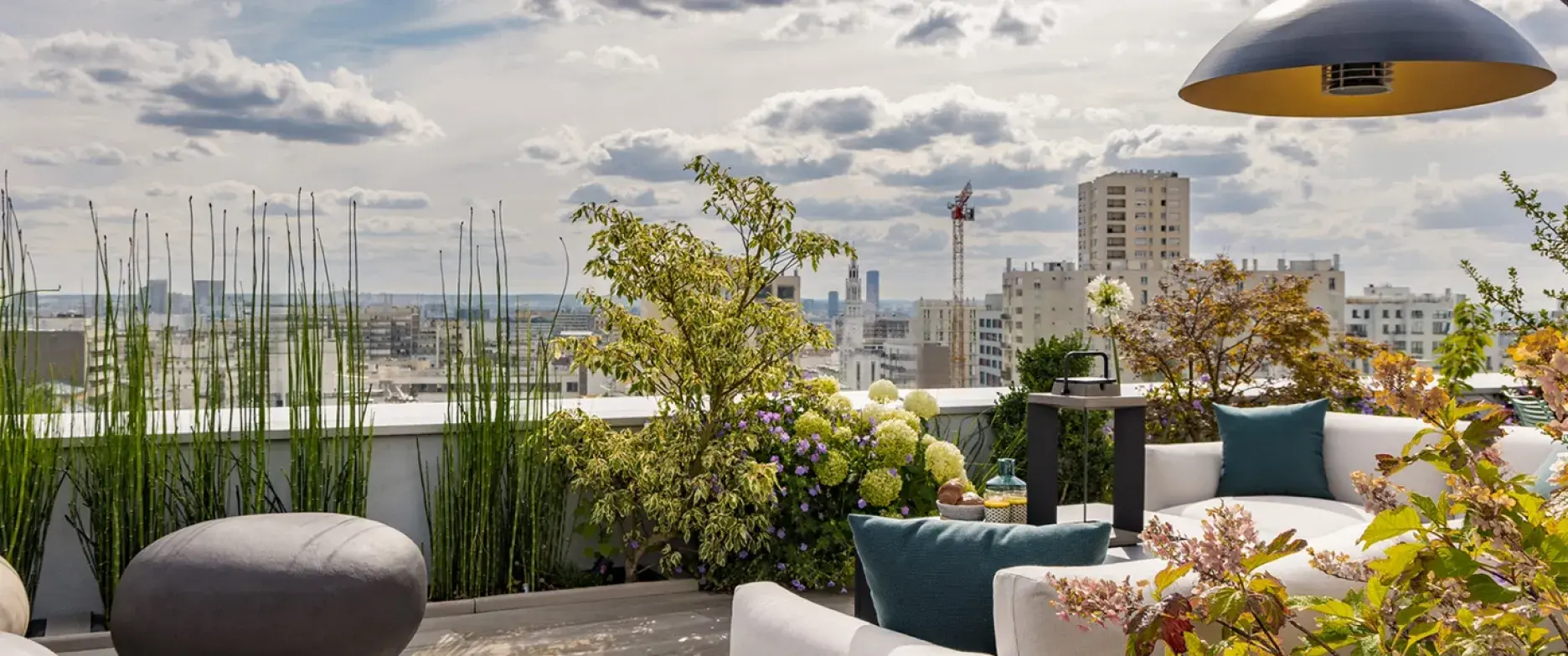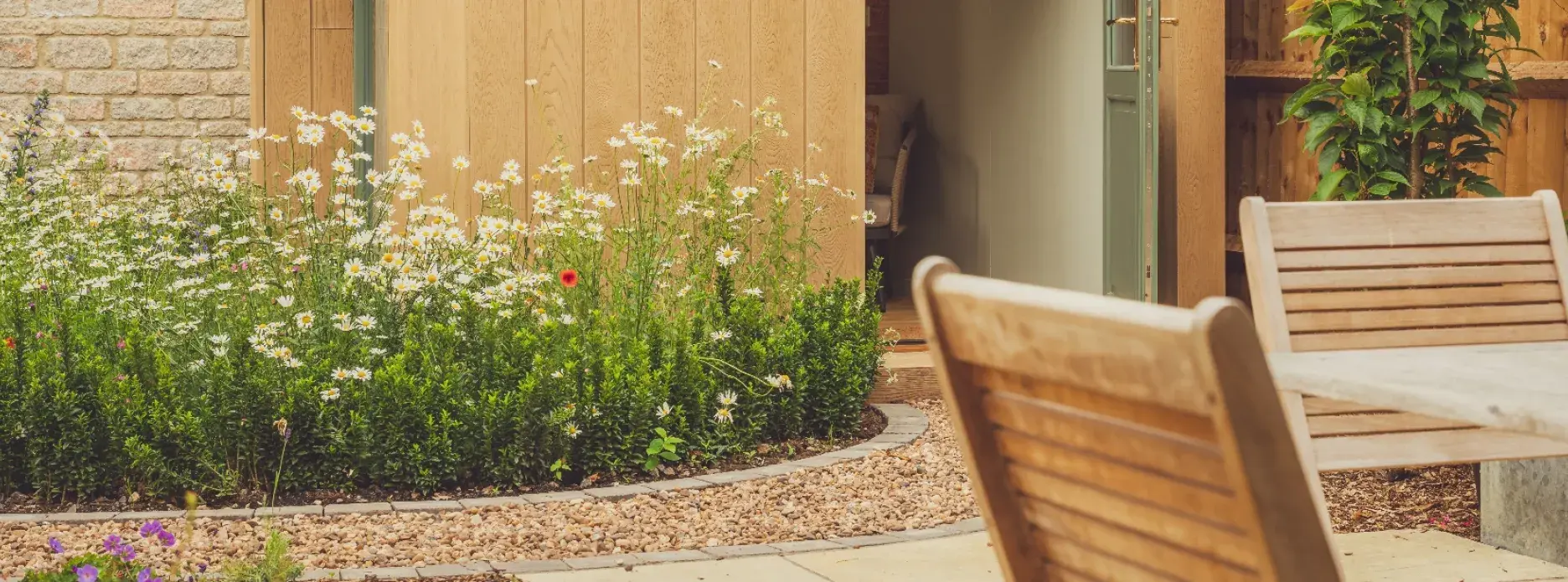MIllboard knowledgebase
Understanding the Cost of Cladding: Materials, Comparisons & Benefits

Article Highlights
External cladding has become a popular aspect of modern home design, offering both aesthetic appeal and functional benefits. In addition to enhancing the look of your home, cladding provides protection against weather conditions, improves insulation, and could increase your home’s resale value. The choice of cladding involves understanding various factors, including the initial investment and long-term benefits of a wide range of materials.
In this guide, we will explore the cost of cladding, focusing on its benefits, factors that influence costs, and comparisons between various materials, including wood and composite cladding.
What are the Benefits of Cladding for Your Home?
Exterior wall cladding serves as a shield, protecting the home from various elemental stressors, including rain and wind. This protective extra layer of material also helps improve heat retention as well as the overall aesthetic of the exterior of your home. This can help lower energy bills, making it a cost-effective solution in the long run.
Due to the various materials and colour options available, exterior cladding can enhance your home's visual appeal and potentially increase its overall market value if you choose to sell the property in the future.
Common Types of Cladding Materials
Each material offers unique benefits, but they are available at different price points; the option you choose will impact the aesthetic appeal and functionality of your home's exterior. Consider factors such as durability, maintenance requirements, weather resistance, insulation properties, and overall price before choosing the right material for your next cladding project.
Common types of cladding include:
- Wooden Cladding: Offers a natural warmth and beauty with traditional aesthetics; however, timber cladding requires regular maintenance to prevent rot and weathering.
- PVC Cladding: A cost-effective and low-maintenance option, as it is lightweight and resistant to moisture. PVC cladding may not have the same visual appeal or versatility as other materials.
- Stone Cladding: Highly resistant to weather conditions, though it can come with a higher initial cost and complex installation.
- Fibre Cement Cladding: A building material composed of cement, cellulose fibres, sand, and water. It's incredibly durable and long-lasting; however, similar to stone, it may have a higher upfront cost and is often not as aesthetically pleasing as other materials.
- Metal Cladding: Often beneficial for more modern and industrial homes, but may need additional insulation to improve energy efficiency.
- Composite Cladding: A blend of materials designed to mimic the appearance of wood while offering superior durability and low maintenance.
The Benefits of Millboard Composite Cladding
Among these options, Millboard composite cladding stands out for its innovative design and three distinct collections: Board & Batten+, Décor, and Shadow Line+. Unlike other composite products, Millboard's composite cladding is 100% wood-free, made from a fibreglass reinforced resin-mineral material.
This enhances its durability and helps protect the facade from rot, insect damage, and weathering, making it a fantastic long-term investment.
Order up to three free samples of your favourite style of cladding here.
Factors Influencing the Cost of Cladding
To configure your cladding's cost, consider certain factors that may impact the overall project:
Material Costs: Wood vs Composite Cladding
The material you choose has a significant impact on the overall cost. Wood cladding is renowned for its natural beauty and typically falls within the mid-range price category among cladding materials. The cost of these boards may change based on the type, quality and size of the wood you choose.
PVC and uPVC cladding options are typically the cheapest and ideal for budget-conscious homeowners. However, they often have limited aesthetics.
On the other hand, other materials, such as fibre cement, metal, and composite cladding, have a larger upfront cost. If you have a limited budget, consider wooden or PVC cladding. However, bear in mind that natural materials require frequent maintenance, which can lead to accumulated repair costs throughout their lifespan.
Size of the property
The size of your home's exterior and the amount of cladding required are primary cost factors. Larger homes demand more materials and labour, increasing the overall expense. Accurate measurements and professional consultations can help minimise waste and control costs.
Labour and installation cost
The cost of labour for cladding installation in the UK varies depending on experience and location. A general builder may charge less than a specialist for cladding installation. However, for correct installation, it's best to choose an expert with a strong history in cladding work.
If your home has special features, such as bay windows or dormers, the installation may require more detailed work, which can also impact the overall cost.
To ensure a quality finish, approved Millboard installers undergo training on the specific finishes, products, and tools necessary for the proper installation of cladding. Our approved installers deliver consistent, high-quality installations to provide you with peace of mind for your next cladding project.
For our composite cladding, search our directory or complete our online form to find an approved Millboard installer.
What is the Cost of Cladding?
To help you better understand, let's examine the cost of popular cladding options per square metre. Please note that these are average prices, which may vary depending on your specific project needs. Make sure to ask for quotes from different cladding installers nearby to get an accurate estimate for your specific requirements:
Wooden cladding
Wooden wall cladding provides a natural and timeless appearance, making it a popular choice for traditional and modern homes alike. Softwoods, like pine or larch, cost between £10 and £40 per m², while premium hardwoods, like cedar or oak, can range from £20 to £60 per square metre. While beautiful, wooden cladding requires regular maintenance, such as staining or treating, to prevent rot and weather damage, which can lead to future expenses due to the cladding material.
The quality finish you pick for the timber cladding boards can also change the total cost. Treated timber lasts longer, but it is often more expensive than untreated timber.
PVC cladding
PVC cladding is a budget-friendly and low-maintenance option, costing approximately £20 to £60 per square metre. Its lightweight nature makes it easy to install, reducing labour costs. However, it may lack the visual appeal and durability of more premium materials, making it better suited for utility buildings or budget-conscious projects.
Compare composite vs PVC cladding with our expert guide here.
Stone cladding
Stone cladding provides a luxurious, high-end appearance and is one of the most durable options available. Natural stone cladding costs approximately £80 to £150 per square metre, depending on the type of stone. Installation can be labour-intensive, further increasing costs.
If you want a cladding material that showcases a luxury or heritage look, stone cladding is a great choice, provided it fits your budget.
Read our comparison guide on stone cladding vs composite cladding for more information.
Metal and Aluminium Cladding
Though robust and hard-wearing, stainless steel can be expensive due to its weight. Aluminium cladding is a more affordable alternative, ranging from £30 to £50 per m². Metal cladding is highly resistant to weather and fire, but may require insulation layers to improve energy efficiency.
You can find aluminium cladding in a wide range of colours and finishes, including textured, powder-coated, and anodised finishes.
Read our comparison guide on metal cladding vs composite cladding for more information.
Composite Cladding
Composite cladding combines the aesthetic of natural materials with the durability of modern technology. It is a beneficial alternative to timber cladding and is gaining popularity, especially in contemporary homes. It typically costs over £100 per m². The upfront cost may be higher than wood and PVC, but is often offset by minimal upkeep and extended longevity.
In the table below, compare the cladding materials on their cost and durability:
|
Material |
Average cost (£/m²) |
Maintenance |
Durability |
|
Wooden cladding |
£40 to £150 |
High |
Moderate |
|
uPVC cladding |
£20 - £60 |
Low |
High |
|
Stone cladding |
£80 - £150 |
Low |
Very high |
|
Metal cladding |
£30 - £50 |
Low |
High |
|
Composite cladding |
£50 - £120 |
Very low |
Very high |
The upfront cost of composite cladding can be higher than natural timber or PVC. However, its long-lasting nature and low upkeep make it a smart investment over time.
If you are considering composite cladding, Millboard's range is one of the stand-out options in this group. Our Envello cladding collection is extremely durable and handles various weather conditions well. It also has a realistic wood-grain look whilst being 100% wood-free.
With so many designs and colour options to choose from, there's something for every homeowner's style:

Gold/Burnt Cedar -Décor
Why Millboard Composite Stands Out
Millboard composite cladding is a premium choice that distinguishes itself through its innovative design, durability, and aesthetic appeal. Unlike traditional timber cladding, which requires ongoing maintenance to prevent weathering, warping, and rot, Millboard cladding is crafted using a unique wood-free composition.
- Wood-free composite: Free from wood, Millboard cladding has no risk of rotting or insect damage.
- Moulded from real oak: Each oak board is selected based on variations in the wood grains and tones to replicate the authentic look without the maintenance requirements of natural wood.
- Lightweight and durable: No need for staining, sealing, or painting—just occasional cleaning required.
- Highly resistant to weathering and moisture: Built to last, highly resistant to fading, warping, and splintering.
- Fire rated: Our Shadow Line+ and Board & Batten+ collections have been tested to BS EN 13501-1 for fire performance.
If you’d like to try out our composite cladding, sample your favourite colours and styles below.
While the initial cost of Millboard composite cladding may be higher than that of some alternatives, the long-term return on investment, longevity and minimal maintenance make it an attractive choice. Since regular maintenance treatments, repairs, and replacements are not needed, the total cost of ownership can be significantly lower over time.
Homeowners benefit from a stylish, high-performance cladding solution that enhances property value and provides lasting peace of mind.
If you have any questions, contact the Millboard team today!
Frequently Asked Questions
Does Millboard composite cladding fade over time?
Millboard composite cladding is designed with UV stability, meaning it is highly resistant to fading and maintains its original colour for many years. Unlike natural wood, which can grey and deteriorate under prolonged sun exposure, Millboard’s high-quality pigments and durable composition ensure long-lasting aesthetic appeal.
Related Content
The Cost of Composite Cladding: What Affects the Price?











